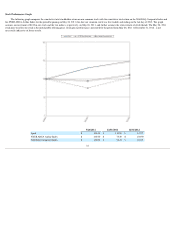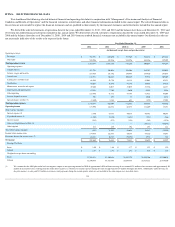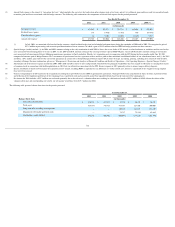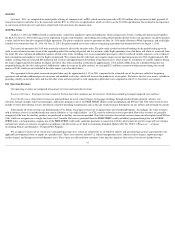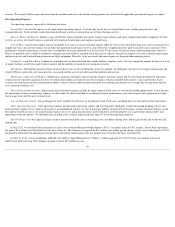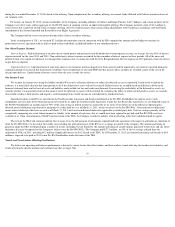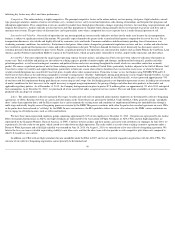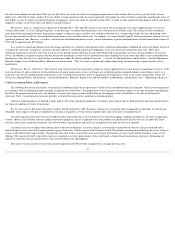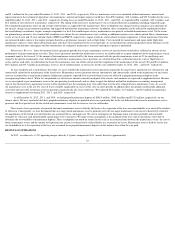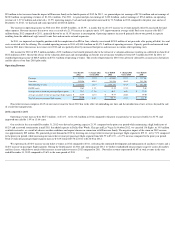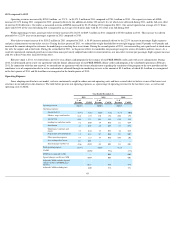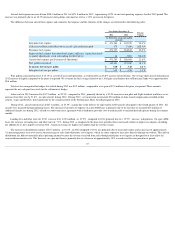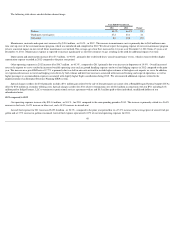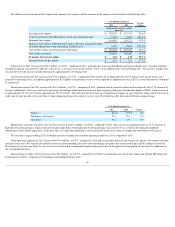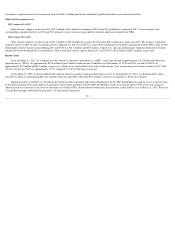Spirit Airlines 2012 Annual Report Download - page 41
Download and view the complete annual report
Please find page 41 of the 2012 Spirit Airlines annual report below. You can navigate through the pages in the report by either clicking on the pages listed below, or by using the keyword search tool below to find specific information within the annual report.
following key factors may affect our future performance.
Competition . The airline industry is highly competitive. The principal competitive factors in the airline industry are fare pricing, total price, flight schedules, aircraft
type, passenger amenities, number of routes served from a city, customer service, safety record and reputation, code-sharing relationships, and frequent flier programs and
redemption opportunities. Price competition occurs on a market-by-market basis through price discounts, changes in pricing structures, fare matching, target promotions and
frequent flier initiatives. Airlines typically use discount fares and other promotions to stimulate traffic during normally slower travel periods to generate cash flow and to
maximize unit revenue. The prevalence of discount fares can be particularly acute when a competitor has excess capacity that it is under financial pressure to sell.
Seasonality and Volatility . Our results of operations for any interim period are not necessarily indicative of those for the entire year because the air transportation
business is subject to significant seasonal fluctuations. We generally expect demand to be greater in the second and third quarters compared to the rest of the year. The air
transportation business is also volatile and highly affected by economic cycles and trends. Consumer confidence and discretionary spending, fear of terrorism or war,
weakening economic conditions, fare initiatives, fluctuations in fuel prices, labor actions, changed in governmental regulations on taxes and fees, weather and other factors
have resulted in significant fluctuations in revenues and results of operations in the past. We believe demand for business travel historically has been more sensitive to
economic pressures than demand for low-price travel. Finally, a significant portion of our operations are concentrated in markets such as South Florida, the Caribbean, Latin
America and the Northeast and northern Midwest regions of the United States, which are particularly vulnerable to weather, airport traffic constraints and other delays.
Aircraft Fuel . Fuel costs represent the single largest operating expense for most airlines, including ours. Fuel costs have been subject to wide price fluctuations in
recent years. Fuel availability and pricing are also subject to refining capacity, periods of market surplus and shortage, and demand for heating oil, gasoline and other
petroleum products, as well as meteorological, economic and political factors and events occurring throughout the world, which we can neither control nor accurately
predict. We source a significant portion of our fuel from refining resources located in the southeast United States, particularly facilities adjacent to the Gulf of Mexico. Gulf
Coast fuel is subject to volatility and supply disruptions, particularly in hurricane season when refinery shutdowns have occurred in recent years, or when the threat of
weather-related disruptions has caused Gulf Coast fuel prices to spike above other regional sources. From time to time, we use fuel hedges using NYMEX WTI and U.S.
Gulf Coast jet fuel collars as the underlying commodity to attempt to mitigate price volatility. Additionally, during peak hurricane season (August through October), we may
enter into jet fuel swaps to protect the refining price risk between the price of crude oil and the price of refined jet fuel. Historically, we have protected approximately 70%
of our forecasted fuel requirements during peak hurricane season using jet fuel swaps. Our fuel hedging practices are dependent upon many factors, including our assessment
of market conditions for fuel, our access to the capital necessary to support margin requirements, the pricing of hedges and other derivative products in the market and
applicable regulatory policies. As of December 31, 2012 , the Company had agreements in place to protect $7.8 million gallon s or approximately 5% of its 2013 anticipated
fuel consumption. As of December 31, 2012 , we purchased all of our aircraft fuel under a single fuel service contract. The cost and future availability of jet fuel cannot be
predicted with any degree of certainty.
Labor . The airline industry is heavily unionized. The wages, benefits and work rules of unionized airline industry employees are determined by collective bargaining
agreements, or CBAs. Relations between air carriers and labor unions in the United States are governed by the RLA. Under the RLA, CBAs generally contain “amendable
dates” rather than expiration dates, and the RLA requires that a carrier maintain the existing terms and conditions of employment following the amendable date through a
multi-stage and usually lengthy series of bargaining processes overseen by the NMB. This process continues until either the parties have reached agreement on a new CBA,
or the parties have been released to “self-help” by the NMB. In most circumstances, the RLA prohibits strikes; however, after release by the NMB, carriers and unions are
free to engage in self-help measures such as strikes and lockouts.
We have three union-represented employee groups comprising approximately 54% of our employees at December 31, 2012 . Our pilots are represented by the Airline
Pilots Association, International, or ALPA, our flight attendants are represented by the Association of Flight Attendants, or AFA-CWA, and our flight dispatchers are
represented by the Transport Workers Union of America, or TWU. Conflicts between airlines and their unions can lead to work slowdowns or stoppages. In June 2010, we
experienced a five-day strike by our pilots, which caused us to shut down our flight operations. The strike ended as a result of our reaching a tentative agreement under a
Return to Work Agreement and a full flight schedule was resumed on June 18, 2010. On August 1, 2010, we entered into a five-year collective bargaining agreement. We
believe the five-year term is valuable in providing stability to our labor costs, and that the other terms will also provide us with competitive pilot labor costs compared to
other U.S.-based low-cost carriers.
In addition, our CBA with our flight attendants became amendable under the RLA in 2007, and we are currently engaged in negotiations with the AFA-CWA. The
outcome of our collective bargaining negotiations cannot presently be determined and
40




